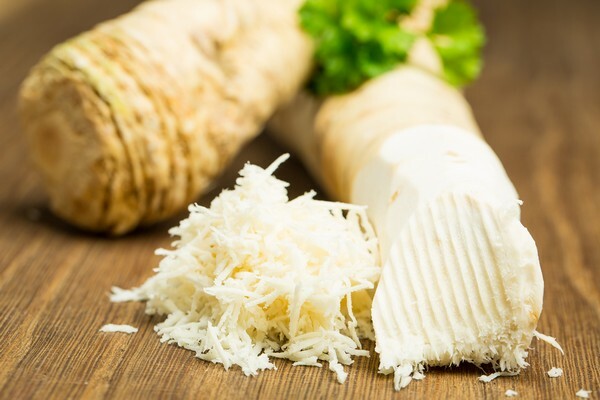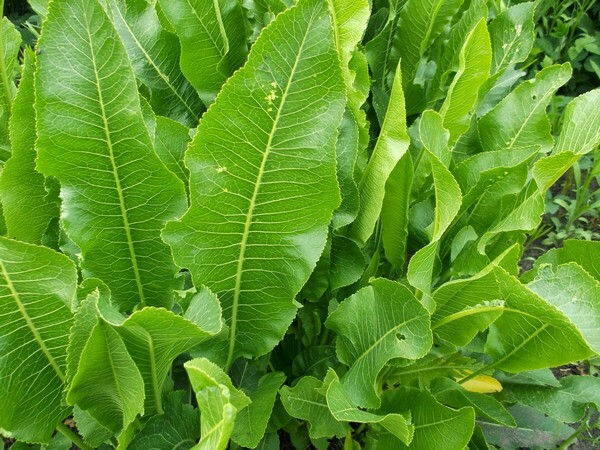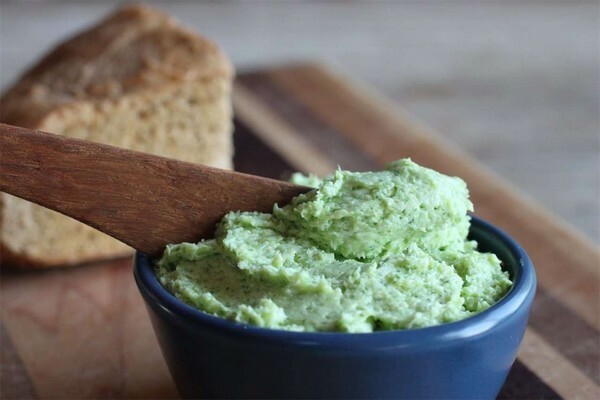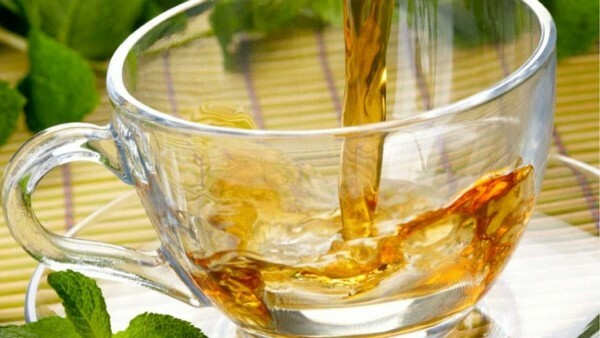- Useful properties
- Therapeutic effect
- Indications
- Contraindications
Horseradish is not only an acute and tasty seasoning, but also a medicinal plant. In folk medicine, roots, fresh and dry leaves, flowers are used. Horseradish quickly and effectively copes with bacterial and viral infections, arthritis, diseases of the gastrointestinal tract. A heal plant can be used in the therapy of women, men, and in small quantities and for the treatment of colds in children and adolescents. Useful properties of horseradish, as well as its contraindications, determine the biologically active substances entering into the composition of roots and leaves. Therefore, before preparing infusions and broths should consult with a doctor about the advisability of treating horseradish.

Useful properties
A tall plant with large dark green leaves belongs to the Cabbage family, like the shepherd's bag, wasabi, turnip, radish. The composition of these vegetable, oil and medicinal crops includes mustard oil, which gives the leaves and roots a specific spicy taste and aroma. It is this biologically active substance that provides horseradish with medicinal properties that allow treating respiratory diseases and pathologies of the musculoskeletal system.
The medicinal plant also contains many other useful chemical compounds:
- Lysozyme. This substance is similar in effect to the enzyme produced in the human body. When contacting lysozyme with the outer membrane of a bacterial cell, its complete destruction occurs;
- Vitamin C. Ascorbic acid takes part in the formation of immunity of adult children, strengthens the body's defenses;
- Vitamins of group B. In horseradish there is especially a lot of thiamine, a compound necessary for the active functioning of the central and autonomic nervous systems;
- Sinigrin. The alkaloid shows a pronounced bactericidal activity, destroys pathogenic microorganisms, prevents the spread of infections;
- Fatty oils. They contain a high concentration of triglycerides, necessary for the proper functioning of the heart and blood vessels.
The use of horseradish is also in the ability to accelerate the absorption of proteins, fats and carbohydrates due to the presence in the plant of flavonoids. It is worth noting the presence in the leaves, roots and flowers of a combination of micro- and macro elements: zinc, potassium, copper, iron, calcium. These beneficial substances are involved in all metabolic processes, they are necessary for hematopoiesis. Also in the plant include phytoncides that can destroy free radicals and prevent premature aging of tissues.
This is interesting: Store seasonings with horseradish do not show therapeutic effect, and are used only to improve the taste of food. Therapeutic properties of the plant persist for a week after the roots are crushed.

Therapeutic action
Adding grated horseradish roots to meat or fish dishes, and the leaves in marinades not only improves the taste of dishes, but also helps the proper digestion of food. Mustard oil speeds up metabolic processes, normalizes peristalsis, relieving a person from constipation and diarrhea. This feature of a useful plant is used by dieticians. The inclusion of seasoning in the diet allows you to quickly get rid of extra pounds. What else is useful horseradish for the human body:
- increases the body's resistance to viral and bacterial infectious agents;
- enhances the production of digestive enzymes and gastric juice;
- stops inflammation;
- dilutes and removes phlegm from the respiratory tract;
- normalizes blood circulation in large and small vessels;
- has an antispasmodic and analgesic effect;
- cleanses the digestive tract from toxins and toxins.
Traditional healers use roots, flowers and horseradish leaves to prevent the formation of benign and malignant tumors. The medicinal plant prevents the spread of metastases to healthy tissues and organs. Very useful are the roots also for the gums and the oral cavity. Using spices from horseradish, a person conducts a kind of sanitation of teeth and mucous membranes. Glycosides and essential oils destroy pathogenic bacteria, promote the regeneration of tissues. Currently, scientists are working on the creation of toothpaste and rinse, which will include biologically active substances from the leaves and roots of horse radish.
For women
Whitening properties of decoction of horseradish are used by representatives of the fair sex to eliminate pigmented spots. And the plant compounds with antibacterial properties help to get rid of small pimples and acne. How to prepare a decoction for cleansing and whitening the skin:
- In an enameled saucepan, pour a tablespoon of grated roots and pour a glass of hot water.
- Spread the mixture over low heat for 2 minutes, cool and filter.
- Wipe skin of face and / or body 3-4 times a day.
Roots of horseradish contain biologically active substances, which are analogues of female sex hormones. Phytoestrogens help reduce the severity of pain during menstruation, eliminate hot flashes and psychoemotional disorders during the natural menopause. Stabilize the hormonal background of a woman will allow daily use of a tablespoon of seasoning from horseradish.
Warning: Medicinal plant should not be used in case of heavy menstruation. Expansion of blood vessels will lead to increased bleeding and the development of iron deficiency anemia that is dangerous for women.

. For children
Horseradish is not used in therapy for children under 12 years old, and its external use is prohibited until the age of 18 due to the high likelihood of an allergic reaction to mustard oil. A useful plant helps treat colds in adolescents, is an excellent tool for the prevention of intestinal infections. Prepare a medicinal product can be on this recipe:
- 3 tbsp. Spoons of the crushed roots to shift with a glass of thick honey.
- Place the product in a glass container and store in a refrigerator.
- Give each day a child a tablespoon of a fragrant mixture before eating.
Horseradish treatment will accelerate recovery for colds complicated by dyspeptic disorders - nausea, vomiting, diarrhea.
For men
For representatives of the stronger sex it is important to have a vitamin K and a microelement of zinc in the composition of the medicinal plant. These biologically active substances stimulate the production of the male sex hormone testosterone. Increasing its concentration in the bloodstream has a positive effect on sexual activity:
- increases libido;
- prolongs intercourse;
- improves the qualitative and quantitative characteristics of sperm.
Phytoncides and triterpentines contained in horseradish roots display antibacterial and disinfectant activity. This positively affects the functioning of the prostate gland and is used by folk healers in the therapy of prostatitis. To increase the potency and avoid urological pathologies, a man needs to eat a sandwich at dinner every day, seasoned with a tablespoon of shredded horseradish roots.
Indications for use
Therapeutic properties of horseradish are actively used in the therapy of various pathologies. It is practiced both internally and externally. Fresh leaves folk healers recommend to impose on sick joints for cupping the inflammatory process and reducing the severity of the pain syndrome. This method of treatment with horseradish helps to speed up recovery with intervertebral hernias, radiculitis, arthritis, neuralgias, jamming of nerve roots. In the form of broths and infusions the plant is used in the therapy of such pathologies:
- atrophic and hypoacid gastritis;
- sinusitis, tracheitis, laryngitis, pneumonia;
- headaches, migraines;
- fatty liver, hepatitis, cholecystitis;
- urethritis, bacterial and fungal cystitis.
Horseradish is used to eliminate clinical manifestations of allergies in hives, atopic dermatitis, eczema. To do this, moisten a sterile napkin in a liquid and apply the skin to the affected area for 25-30 minutes. The treatment procedure should be performed three times a day, given that the horseradish broth is able to lighten the skin.
Recommendation: Horseradish helps to relieve pain when stretching the ankle ligaments. It is necessary to grease a large fresh leaf with honey, apply on the damaged area of the foot, and fix it with a bandage. Hold for about an hour, repeat the procedure if necessary.

Respiratory infections
When grinding the roots of horseradish, the mucus from the nose begins to develop abundantly in the person, lacrimation appears. Unpleasant during cooking, the feeling helps to improve the health of a person with angina, bronchitis, tracheitis, rhinitis. These pathologies occur against the background of the formation of a large amount of mucus in the nasal cavity and on the inner wall of the larynx. It is enough to eat a slice of bread flavored with horseradish, so that the viscosity of thick sputum is reduced, and it is freely evacuated by their respiratory tract. Along with her, the organism of a person is left also by pathogens of respiratory infections - bacteria and fungi.
Recommendation: Traditional healers use crushed roots for the treatment of dry cough. The use of horseradish seasoning prevents the strong adhesion of phlegm to the mucous membranes of the trachea and bronchi. Under the influence of mustard essential oil, it gradually liquefies. This allows you to translate dry cough into its wet productive form, to facilitate the breathing of a person, to normalize sleep.
Heart and blood vessel pathologies
Due to the high concentration of magnesium and potassium trace elements in the plant, horseradish treatment at home helps to improve the condition of veins, arteries and capillaries. Flavonoids from a medicinal plant purify vessels from cholesterol blocks, thus ensuring free circulation of blood. In this case, useful triglycerides remain in the body, which have a positive effect on the functioning of the myocardium.
Regular consumption of crushed roots replenishes potassium stores in tissues. Nutrients and biologically active substances, as well as molecular oxygen, begin to enter the cells along with blood, promoting rapid regeneration. This is an excellent prevention of stroke, heart attack, atherosclerosis.

High blood pressure
Horseradish from pressure is used only as a decoction. Using such a medicinal plant form helps to minimize the irritating properties of mustard oil and glycosides. Broth horseradish has a selective effect on blood vessels, expanding them and reducing the rate of blood flow. Since the roots contain a high concentration of potassium, the urine frequency increases in a person. Removal of excess fluid helps prevent swelling of the face, hands and spoons. Unlike pharmacological diuretics, decoction of horseradish preserves in the human body all the necessary trace elements. Prepare the medicine as follows:
- Peel the large root and grind with a float.
- Pour 3 cups of water and bring to a boil.
- Simmer for 3-5 minutes, cool and filter.
- Add 3 tbsp.spoons of thick honey and take a tablespoon three times a day after meals.
But crushed fresh roots will help normalize blood pressure to hypotension, often experiencing weakness and dizziness. For good health, you need to eat during lunch a teaspoon of flavored seasoning with a slice of black bread.
Contraindications
The health benefits of horseradish are due to the chemical composition of the plant, namely the high concentration of glycosides and essential oils. Medicinal forms from leaves and roots will show a curative effect only when properly applied. The application of an excessive amount of ointment to the skin will provoke a severe burn, and the food, abundantly flavored with grated horseradish, can damage the mucous membrane of the stomach. The plant can not be used in therapy when diagnosing the following pathologies in an adult or child:
- impaired renal functional activity;
- acute and chronic pancreatitis;
- gastritis with high acidity;
- arterial hypertension;
- pregnancy and lactation.
Horseradish is not suitable for treating people who are sensitive to it because of the risk of developing allergies, anaphylactic shock, swelling of Quincke.
Advice: Before applying rubbers or ointments on the skin, a small test should be performed. In a fold of the elbow or wrist, a small amount of the drug should be rubbed in and wait 30-40 minutes. If during this time the skin does not show rashes or redness, then you can safely proceed to treatment, while observing the moderation.
